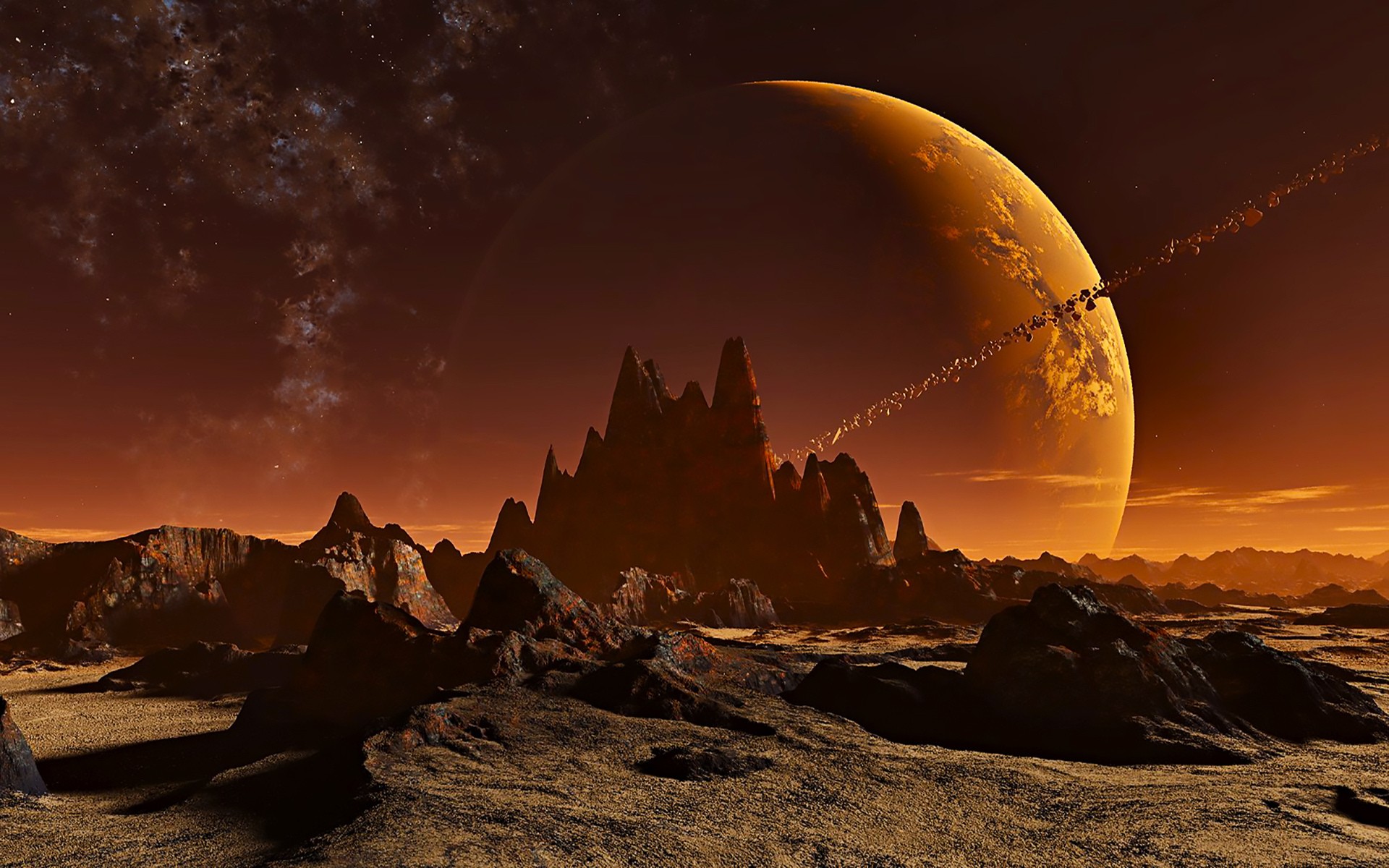
| Main | Neocene |

All pictures are taken from open sources and belong to their authors
“Blue moon” is quite a real thing, because it’s a name of a
hypothetical yet space object, a habitable moon of the planet. Actually, there
is nothing strange about lunar life. The first candidate for habitability in
the Solar System, in addition to Earth, and standing even ahead of Mars, is
Jupiter’s moon Europa. And the second one is Saturn’s moon Enceladus. Thus,
there is something beautiful about the idea of the existence of life not on
planets, but on moons, especially on the moons of gas giants. At least, if we
keep in mind the suitability for life of unpretentious microorganisms, the conditions
of habitability can develop on the moons with a high probability. However, we
will talk about the possibility of the existence of advanced and Earth-like
life on the moons of the planets.
Although at the moment the moons of exoplanets covered with oceans have not
yet been discovered, such bodies have already received the name “blue moons”...
[…] The orientation of blue moons, like Pandora from the Avatar movie, is quite
traditional: tidal lock will keep them constantly oriented with the same side
to the planet.
It is also worth starting quite traditionally: from the clarifying the question
whether the appearance of such bodies is possible and probable, based on the
already known mechanisms of planet formation. The habitable moon must be large
enough to hold the atmosphere. At the moment it is believed that the lower limit
of the mass of a habitable planet is 0.3 of the mass of the Earth – almost three
Marses.
The first impression that a big moon needs a big planet is false. It works a
little bit differently. The classical mechanism of the formation of moons is
from fragments formed during the absorption of planetoids by a protoplanet –
is less effective the higher the mass of the body and, accordingly, the first
cosmic velocity. Therefore, the Jupiter and Saturn systems are very modest in
relation to the mass of these planets. The appearance of a “blue moon” near
the gas giant seems difficult to explain.
A version of double planet (planetesimals pull together to two connected centers),
the masses of which components may have a ratio 1:10, seems to be more promising.
Presumably, it was as a double planet that the Earth-Moon system was formed
(at the final stage, the Proto-Moon annihilated with Theia), as well as the
Venus-Neith system (a moon the size of Mercury fell very soon as a result of
tidal effects of the Sun, having overturned the planet,). Thus, in spite of
bad karma, binary planets in systems close in their parameters to the Solar
system should not be uncommon. If the larger component of such a system will
turn out to be a super-earth, the smaller one – that is, the moon – may be massive
enough for habitability.
Planets in the binary system will exist in conditions of very intense tidal
interactions. The tides not only diversify the life of the coastal peoples,
but also bring benefits, warming up the bowels of the planet and helping volcanoes
replenish the atmosphere and hydrosphere. Also the position of the minor components
in close binary systems is very advantageous in this sense. They will receive
free energy from the main body, which means that even with a small gravity of
their own they have a chance not to lose the atmosphere to share the fate of
Mars.
It is hardly possible to talk about some deep specifics of life on the “blue
moon”. A feature of such a body, however, will be complex hydrography. Tidal
phenomena caused by librations in the ocean will be associated not with daily,
but with monthly and annual cycles, while fluctuations in the water level may
be small or, on the contrary, very large, according to the scale of the eccentricity
of the orbit and the inclination of the axis of rotation.
Life on the habitable moon can develop in interesting conditions of low gravity
(which has already been covered by a special article). An imbalance in the night
illumination of the hemispheres will also play a certain role in evolution.
Bright nights on the side of the moon facing the main body will give an advantage
to nocturnal and crepuscular animals like mammals. The impenetrable night darkness
on the reverse side will paradoxically lead to the fact that nocturnal animals,
except deepwater and burrowing ones, that is, not using vision at all, will
be absent there.
Curiously enough, if both components of the binary system turn out to be habitable
– this is quite likely, although the super-earth will most likely be completely
covered by the ocean – their biospheres may become conjugate. Having arisen
on one of the bodies, life in the form of bacterial spores, along with fragments
of rock knocked out by impacts, will penetrate to the other one. Moreover, the
exchange will be mutual and multiple, especially intense in the first hundreds
of millions of years of the system’s existence.
Translated by Pavel Volkov, 2021
The original Russian article is here
| Main | Neocene |